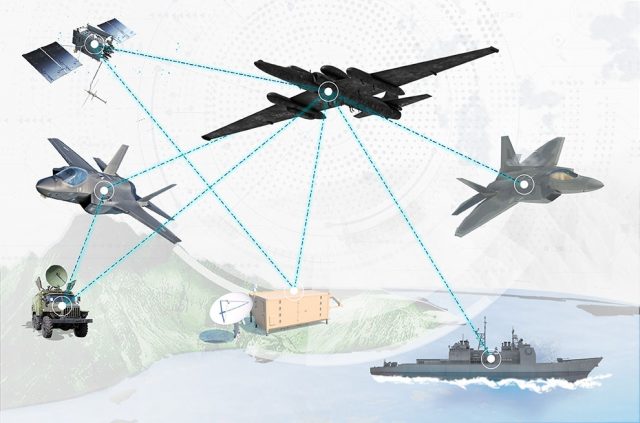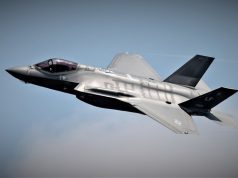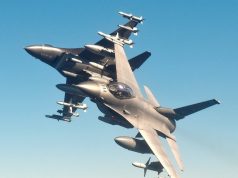Lockheed Martin Skunk Works has revealed details of a project that allowed five F-35s and an F-22 to be linked by a U-2 Dragon Lady in air and to provide real-time 5th Generation data to operators on the ground.
The US Missile Defense Agency and the Air Force achieved the milestone as part of joint work carried out under Project Hydra.
The latest flight test leveraged an open systems gateway (OSG) payload aboard the U-2 to connect an F-22 to five F-35s via native Intra-Flight Data Link (IFDL) and Multifunction Advanced Data Link (MADL), successfully sharing data between all airborne aircraft and with nodes on the ground. The target tracks were also transmitted by and through the U-2 into the fighter avionics and pilot displays.
While Lockheed Martin did not specify when the test took place, it follows an event from December 2020, when an F-35B from the US Marine Corps joined a USAF F-22 Raptor and an F-35A Lightning II variant for tests with an attritableONE XQ-58A Valkyrie unmanned aerial system. During that test, the fifth-generation aircraft overcame long standing connectivity limitations to share actionable operational data in their native secure digital “languages” with and through multiple sources for the first time.

The communication issues that persist in fifth-generation fighters stem from the fact that they are typically limited to communicating with each other and to command and control centers via legacy tactical data connections, not in their native, but incompatible digital languages. The F-35 employs the Multifunctional Advanced Data Link while the F-22 uses its unique Intra-Flight Data Link.
“Project Hydra marks the first time that bi-directional communications were established between 5th Generation aircraft in-flight while also sharing operational and sensor data down to ground operators for real-time capability,” said Jeff Babione, vice president and general manager, Lockheed Martin Skunk Works. “This next-level connectivity reduces the data-to-decision timeline from minutes to seconds, which is critical in fighting today’s adversaries and advanced threats.”
The project Hydra effort also marked the first time F-35 sensor data was delivered to an operational ground system over a Tactical Targeting Network Terminal (TTNT) link using an airborne gateway. This data was then sent to the US Army Integrated Battle Command System (IBCS) airborne sensor adaptation kit. The A-Kit then transmitted data to the IBCS Tactical System Integration Laboratory (TSIL) at Fort Bliss, Texas. IBCS used the F-35 sensor data to conduct a simulated Army fires exercise.
The core of the Hydra payload leverages the open mission systems (OMS) compliant enterprise mission computer 2 (EMC2), facilitating F-22, F-35, TTNT and Link-16 connections. By leveraging both line-of-sight (LOS) and beyond line-of-sight (BLOS) datalink capabilities of the U-2, data can now be shared directly to tactical users and globally to command and control (C2) nodes like the common mission control center (CMCC).
During this demonstration, both the CMCC and Shadow Operations Center at Nellis Air Force Base were able to view the sensor and platform data to enable situational awareness for operational command and control of highly capable air assets.
This demonstration is another key step forward in Lockheed Martin’s support for the Air Force’s Advanced Battle Management System and the Army’s Project Convergence, supporting the goal of providing commanders critical tools for the joint all-domain battlespace environment.



























